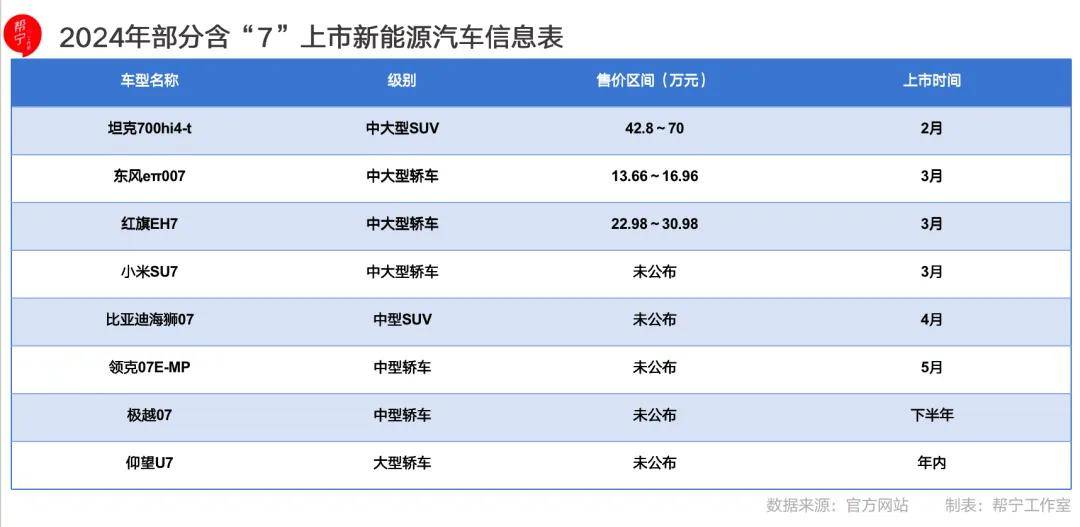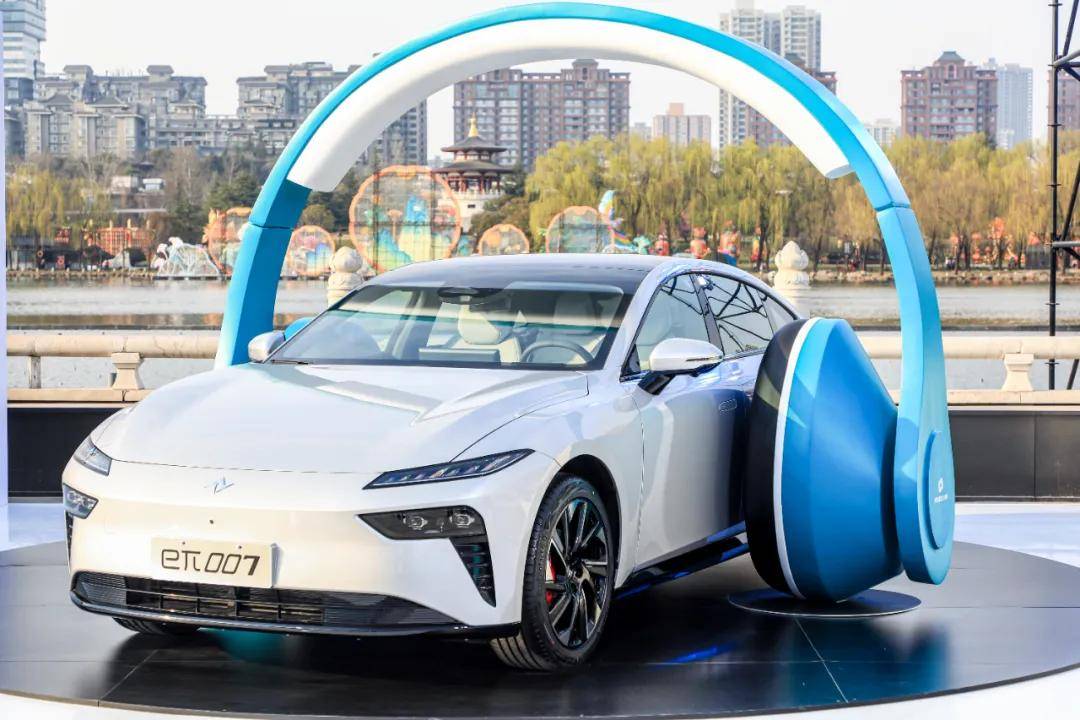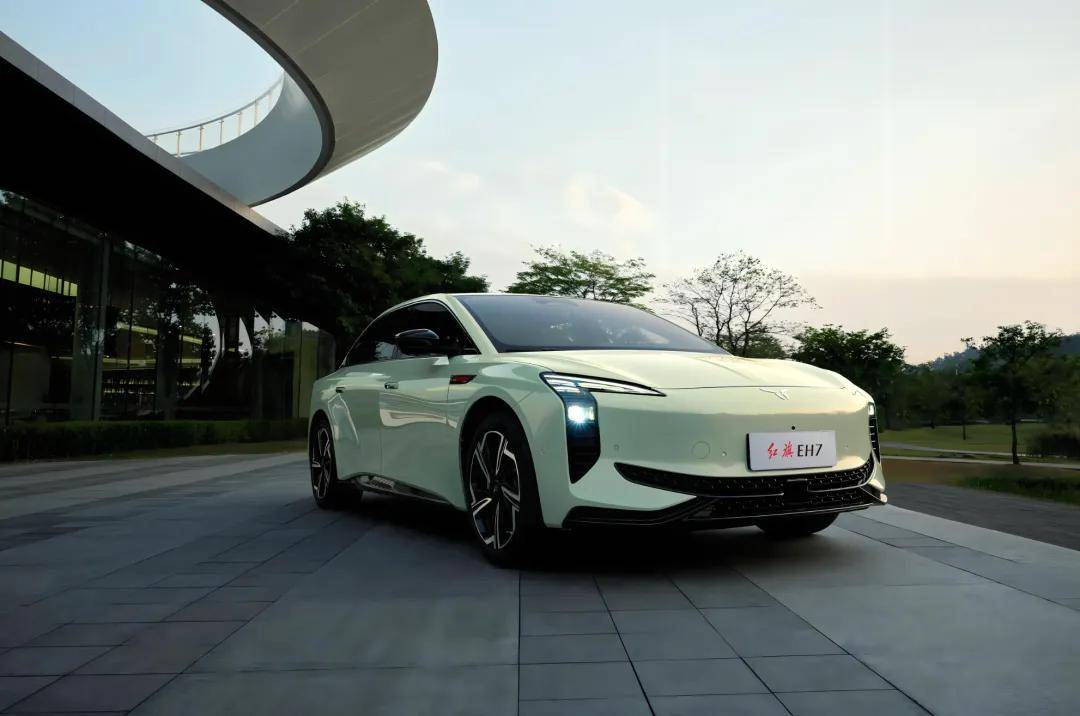

Author | Gong Chenyuan
Editor | Li Guozheng
Production | Bangning Studio (gbngzs)
In just 6 days, the Xiaomi SU7 will be launched.
To build up anticipation for this event, Xiaomi’s founder, Lei Jun, is actively engaging with the audience on various social media platforms such as Weibo and WeChat video accounts, providing daily updates on the progress of Xiaomi SU7 in terms of product design, channel deployment, and production.
On March 22, Bangning Studio visited the Xiaomi car factory located in Beijing Economic and Technological Development Zone, where they saw a large number of SU7 new cars occupying almost every spot in the parking lot. The day before, Lei Jun revealed the progress of SU7 in terms of distribution channels, announcing that starting from March 25, the delivery centers and sales stores in 29 cities across the country would be open to visitors.

▲ Xiaomi Car Factory Parking Lot in Yizhuang
In addition to the Xiaomi SU7, there is a trend of new energy vehicles named with the lucky number “7” being launched in batches, with 2 models introduced just in the first half of March this year alone.
On March 20, the Hongqi EH7 was launched, featuring 5 different configurations ranging from 229,800 to 309,800 yuan. This is the first model introduced after the independent operation of the Hongqi new energy sub-brand. Liu Yigong, who was recently appointed as the General Manager of FAW Group, made his debut appearance at the press conference, marking his first public appearance since taking office. This demonstrates the level of importance that Hongqi brand and even FAW Group attach to the Hongqi EH7.

▲ Liu Yigong, Director, General Manager, and Deputy Secretary of the Party Committee of FAW Group
A week earlier on March 14, the first product under the Dongfeng Yipai brand, the electric coupe eπ007, was launched, offering 4 versions including extended-range and pure electric models, with prices ranging from 159,600 to 199,600 yuan.
Looking back further, from Tank 700hi4-t, Jikey 007, Zhi Jie S7, Roewe D7 to FAW-Volkswagen ID.7 VIZZION…
In recent years, the naming of newly launched car products seems to have a particular fondness for the number “7,” especially in the new energy segment. As we entered 2023, this trend became even more prominent. According to incomplete statistics from Bangning Studio, from 2023 until now, a total of 21 models with names ending in “7” have been introduced by various manufacturers, out of which 16 have already been launched.
What is the magical appeal of the number “7” that makes car manufacturers fond of using it for naming? How do these models perform in the market, and what roles do they play in the manufacturers’ plans?

Focus on Medium to Large Sedans
Since 2023, most of the “7” models that have been launched or unveiled are predominantly medium to large sedans.
Categorized by vehicle type, these products are mostly mid-sized and larger. There are 9 mid-size and 9 large sedans, with 2 full-size sedans, and 1 compact model. Sedans dominate the market with 13 models, followed by SUVs with 7 models, and 1 MPV.
From a strategic perspective, most of the new “7” models are flagship products of the respective manufacturers, some of which even represent the pinnacle of the manufacturer’s current car-making and technological capabilities. Some models are aimed at achieving high sales volumes, while others uphold the mission of advancing the brand.
The most talked-about SU7 recently represents the first mass-produced car by Xiaomi, set to be launched on March 28. It embodies Xiaomi’s car-making philosophy, showcasing advanced X ecology and cutting-edge mobile intelligent space. Lei Jun regards the SU7 as Xiaomi’s masterpiece.
The Red Flag EH7 holds significant strategic importance for the Red Flag new energy sub-brand and even for FAW Group. Built on the new FMEs “Flagship” superstructure, it demonstrates Red Flag’s top-tier performance, range, and intelligence.
This car marks Red Flag’s entry into the new energy field with a brand-new architecture, bearing the responsibility of leading Red Flag’s foray into new energy sectors. Its success or failure will significantly influence the future path of new energy development for FAW Red Flag.
The eπ007 also carries a similar mission, with a clear focus on achieving high sales volumes. Since its establishment, Dongfeng Yipai has targeted the mainstream market, catering to the taste and quality preferences of the new middle-class consumers. The eπ007 is the inaugural model of Dongfeng Yipai, integrating 55 years of technical expertise and strategic resources of Dongfeng Group, marking a crucial milestone in Dongfeng’s transition towards new energy vehicles.

▲ Chen Hao, Member of the Party Committee and Deputy General Manager of Dongfeng Group
In terms of pricing, most “7” models focus on the 150,000 to 300,000 yuan range, which represents the most competitive segment in the new energy vehicle market since 2023.
The Battle for Lucky Number 7 in the Chinese Electric Vehicle Market
According to data from the China Association of Automobile Manufacturers, in the price range of 150,000 to 200,000 yuan, the battle for cost-effectiveness will be the main theme in 2023, with models below 300,000 yuan continuing to dominate the market. In 2023, whether it’s a Battery Electric Vehicle (BEV) or a Plug-in Hybrid Electric Vehicle (PHEV), models priced under 300,000 yuan account for the vast majority of sales in their respective categories.
Looking at the product features, automotive companies are also keen on incorporating their latest technological achievements into models with the number “7.”
Xiaomi claims that the SU7 boasts five core technologies, including the Xiaomi Super Motor, Xiaomi’s self-developed CTB integrated battery technology, Xiaomi’s Super Die Casting, Xiaomi’s full-stack self-developed intelligent driving technology, and Xiaomi’s smart cabin. In key areas such as electric drive, battery, die casting, intelligent driving, and smart cabin, the SU7 has achieved numerous global and Chinese firsts.
Likewise, the Hongqi EH7 has also made innovative breakthroughs by overcoming various industry bottlenecks. It is equipped with a self-developed high-speed motor reaching speeds of up to 22,500 rpm. Additionally, it features the self-developed “Qisai” smart platform, ensuring continuous vehicle evolution. With the industry’s first low-temperature battery cells, the EH7 achieves a winter range retention rate of up to 70%, with a model offering an 820 km range under standard conditions, exceeding 500 km in winter conditions.
From a market perspective, most models bearing the number “7” have been or still are star products in niche markets, such as the Galaxy L7, the Li Xiang L7, and the Deep Blue S7.
In the realm of SUVs, the Li Xiang L7 holds significant influence. This mid-to-large-sized SUV was launched in September 2022, with the L7 Air version hitting the market in February 2023, priced between 301,800 and 379,800 yuan.

In 2023, the Li Xiang L7 sold 134,000 units, averaging tens of thousands of units per month, ranking 7th in sales of new energy SUVs.
In the sedan segment, the Jikexing 007, which debuted in December 2023, stands out as a newcomer. Priced between 209,900 and 299,900 yuan, this mid-sized sedan has already sold over 10,000 units in the first two months of this year.

Capturing Consumer Minds
The considerations of automotive companies and the responses of the market have bestowed exceptional significance upon models bearing the number “7.” Each new car carries the brand’s expectations in various aspects such as market share, brand image, and technological advancement.
As the number “7” becomes a trend in naming new energy vehicles, some automakers have gone so far as to change the names of their existing models to incorporate the number “7,” like the Yangan U7, originally named U6 before the change.
Why are automotive companies so fond of the “7”? Summarizing the reasons, we have the following:

▲ eπ007
Firstly, the primacy effect. This view is widely accepted within the industry.
The primacy effect, also known as the law of primacy or the first impression effect, refers to the profound impact of initial encounters with something or someone on subsequent behavior and evaluations.
Some believe that during the era of conventional fuel vehicles, models like the RS7 and the BMW 7 Series left a lasting impression on consumers. Hence, as the industry transitioned to new energy vehicles, automakers tended to use “7” for their high-end products to leverage this established awareness.
Secondly, the influence of Intel’s naming rules. This may be connected to the entry of internet companies into the automotive sector.
In Intel’s processor naming conventions, there is a category for numerical and performance levels, where higher numbers represent higher performance levels. For instance, 3 denotes basic configuration, 5 indicates cost-effective high performance, 7 signifies high-end flagship models, and 9 symbolizes deluxe top-tier models.
In the Chinese new energy vehicle market, the first model to use “7” in its name was the BAIC EU7, though it did not make significant waves in the market. This was followed by the Xiaopeng P7, which upon its debut in 2020, was positioned as a luxury smart electric vehicle and became a bestseller post-launch.
Following the Xiaopeng P7, various internet car manufacturers like NIO and Li Xiang adopted a similar approach, naming their mid-to-large-sized high-end flagship products with a “7,” which proved to be quite successful.
Soon, this naming trend spilled over to the new energy brands of traditional automakers, leading to the introduction of several star products like the Changan Qiyuan A07, the NETA N7, and the FAW Bestune F7.
Industry insiders believe that employing this naming strategy theoretically reduces the trial and error costs for automakers.
Thirdly, names containing a “7” are simple and easy to remember, enhancing memorability.
Analysis suggests that the core criteria for naming new energy vehicles include positive connotations, relevance to automobiles, and ease of recall.
By using the number “7,” consumers not only find it easy to remember and recognize a brand, but it also ensures consistency and accuracy in verbal and written communication throughout the product promotion process, particularly beneficial for newly established brands.

▲ Hongqi EH7
With the rapid growth of the new energy vehicle market and increasing competition within the industry, some emerging brands have opted to name their first models with the memorable number “7” in a bid to seize an early market advantage. Examples include Xiaomi’s debut car – the SU7, Dongfeng Yipai’s first car – the eπ007, and Hongqi’s new energy sub-brand’s inaugural vehicle – the Hongqi EH7.
This explains the origin of the name SU7 by Xiaomi. Lei Jun once commented, “I also don’t understand why everyone in the domestic automotive industry names their cars with a ‘7’ series. Later, I followed suit and changed it to ‘7’ as well; calling it SU5 wouldn’t work, so let’s go with SU7.” “`
Of course, no matter the reason for favoring “7,” in the end, it all comes down to car companies wanting to use a pleasant name to seize the minds of users immediately and enhance the value of their products.